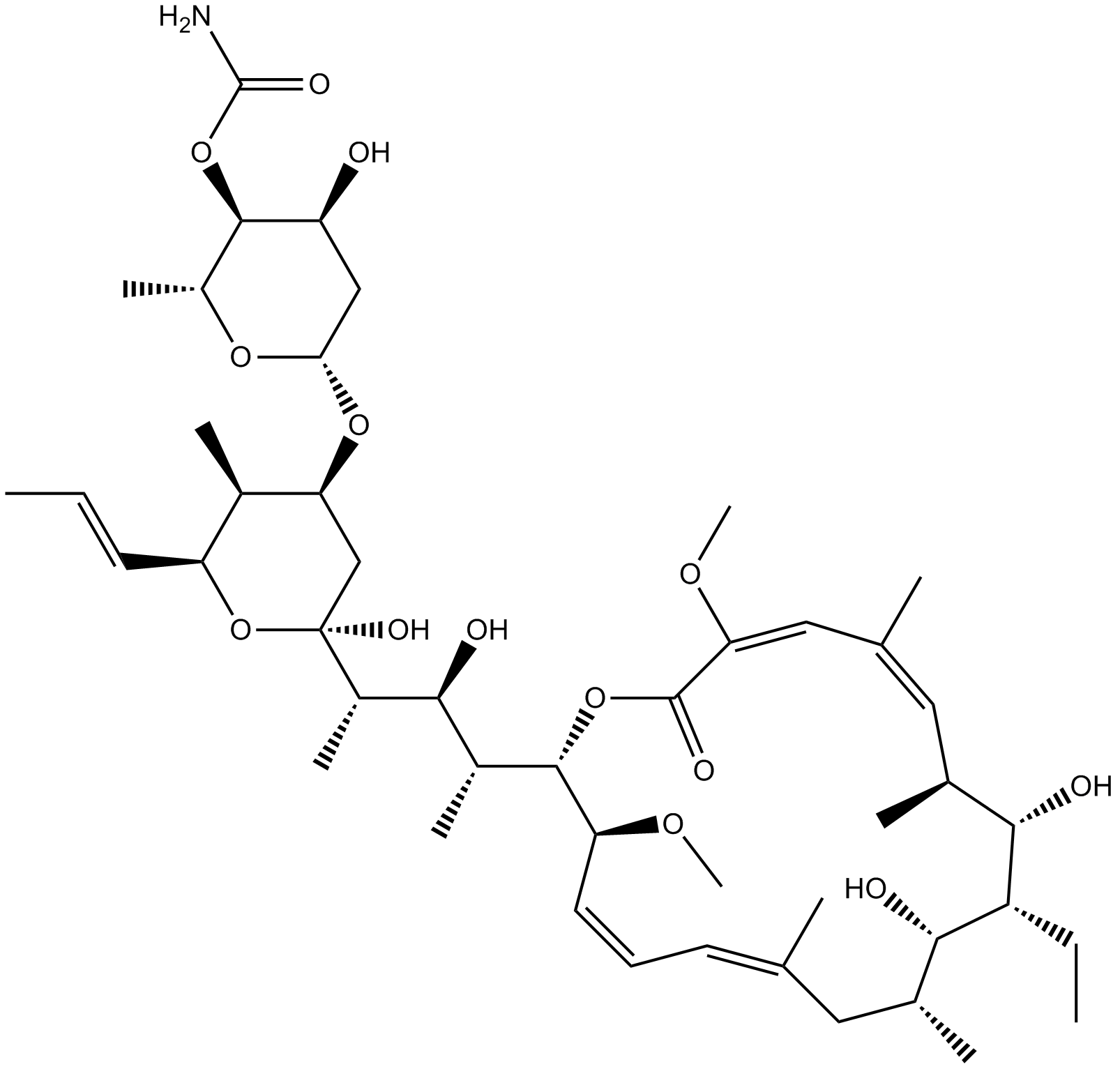Concanamycin A (Synonyms: Antibiotic X 4357B; NSC 674620; X 4357B) |
| Catalog No.GC17519 |
Concanamycin A is a specific inhibitor of vacuolar-type ATPase (V-ATPase) with IC50 value of 10 nM [1].
Products are for research use only. Not for human use. We do not sell to patients.

Cas No.: 80890-47-7
Sample solution is provided at 25 µL, 10mM.
Concanamycin A is a specific inhibitor of vacuolar-type ATPase (V-ATPase) with IC50 value of 10 nM [1].
Vacuolar-type ATPase (V-ATPase) is expressed by clear cells to acidify the lumen of the epididymis, which is essential for male fertility; what's more, it induced proton extrusion into the extracellular medium which contributes to maintaining the intracellular pH under an acidic microenvironment. V-ATPase has also been reported to involve in the process of acidificating microenvironment around/in solid tumors and inducing tumor invasion/multi-drug resistance in several malignant tumors. [2].
Concanamycin A (CMA) is a specific V-ATPase inhibitor and is different from the reported V-ATPase inhibitor SS33410. In oral squamous cell carcinoma (OSCC) OSCC cell lines (MISK81-5, SAS and HSC-4), low-concentration of CMA treatment induced the apoptosis of tumor cells [3]. Pretreated colorectal cancer cell lines with concanamycin A could significantly enhanced the Tumour necrosis factor (TNF) related apoptosis inducing ligand (TRAIL)-induced apoptosis by blocking endosomal acidification by V-ATPase [4]. When tested with prostate cancer cell line C4-2B, inhibition of V-ATPase by concanamycin A reduced 80% invasion in vitro [5].
Concanamycin A also had been reported as a potent inhibitor of CTL cytotoxicity via perforin-mediated cytotoxic pathway [6].
References:
[1]. Huss, M., et al., Concanamycin A, the specific inhibitor of V-ATPases, binds to the V(o) subunit c. J Biol Chem, 2002. 277(43): p. 40544-8.
[2]. Muroi, M., et al., Folimycin (concanamycin A), a specific inhibitor of V-ATPase, blocks intracellular translocation of the glycoprotein of vesicular stomatitis virus before arrival to the Golgi apparatus. Cell Struct Funct, 1993. 18(3): p. 139-49.
[3]. Kiyoshima, T., et al., Chemoresistance to concanamycin A1 in human oral squamous cell carcinoma is attenuated by an HDAC inhibitor partly via suppression of Bcl-2 expression. PLoS One, 2013. 8(11).
[4]. Horova V, et al., Inhibition of vacuolar ATPase attenuates the TRAIL-induced activation of caspase-8 and modulates the trafficking of TRAIL receptosomes. FEBS J, 2013. 280(14).
[5]. Michel V, et al., Inhibitors of vacuolar ATPase proton pumps inhibit human prostate cancer cell invasion and prostate-specific antigen expression and secretion. Int J Cancer. 2013.132(2).
[6]. Benkhoucha M et al., The neurotrophic hepatocyte growth factor attenuates CD8+ cytotoxic T-lymphocyte activity. J Neuroinflammation. 2013, 10.
Average Rating: 5 (Based on Reviews and 4 reference(s) in Google Scholar.)
GLPBIO products are for RESEARCH USE ONLY. Please make sure your review or question is research based.
Required fields are marked with *






